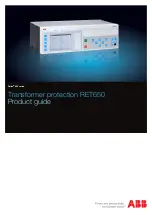
22
23
CHAPTER 1
EN 12841: 2006 type A, B, and C
Normative INFORMATION: EN 12841: 2006. Type A, B, and C. For a maximum nomi-
nal load of 120kg, used with ropes compliant with EN 1891:1998 Class A standard,
with a diameter of 10≤Ø≤11 mm.
Type A devices are designed to be used on ropes for stopping a fall should another work
safety device or one of its parts fail. However, in extreme circumstances, such as the failure
of a working device or its parts during an incorrect use of the system, the type A devices can
intervene in order to stop a limited fall.
LOV3 is a type A, B, and C rope adjusting device, designed to stop a fall or to ascend or
descend on a rope, for a single person.
Used as a type A adjusting device, it must be used as an addition to an adjusting device on
type B and / or type C ropes, on a separate rope.
The additional progression or work positional device with its own anchor point must always
be positioned correctly, and the work must be executed so that any fall risks are reduced.
Used as a type B or C rope adjustment device. When loaded with the user’s weight, it beco-
mes a working device, that must be used in addition of a type A rope adjusting device, on
a separate rope, in order to provide the user with optimal safety.
The additional fall arrest system, with its own anchor point, must always be correctly po-
sitioned, and the work must be executed so that any fall risks and fall height are reduced.
WARNINGS:
>
All activities that involve working at height need a preliminary risk assessment.
>
It is mandatory to minimize the fall factors, but also check the free space required under
the user in the working area before each possible use, so that in case of a fall, there is no
risk of a ground fall, neither any obstacles on the fall trajectory.
>
It is mandatory to tie a stopper knot at the loose end of the rope.
>
Caution: do not affect the safety function of any of the devices by the safety function of
other devices.
According to the EU Regulation 2016/245.
FIELD OF APPLICATION: Personal Protection Equipment (Class 3): A fall arrest
PPE,
LOV3 is a self-locking descender, safety device (Chapter 1), braking device (Chapter
2), and a rescue descender (Chapter 3). It has been designed and manufactured for rope
access. Current intended use: descending, locking or holding/positioning, and exceptio-
nally, fall arrest, while used on specific ropes.
>
A full body harness should be used in a fall arrest system.
>
Ropes must be semi-static type A ropes compliant with EN 1891, and having the
above-mentioned diameter.
>
The harness must be compliant with EN 361, and 813 for types B, and C, and EN 362
connectors must be self-locking.
>
The attachment must be done on a single attachment point of the adjusting device of
the tool and on the work positioning point or the fall arrest point of the harness, on the
other side.
>
All users must receive training, must acquire the competences of appropriate tech-
niques, and must read the technical notices beforehand. Observe all good practices and
local and national regulations.
>
Activities that involve working at height require physical abilities that are certified medi-
cally. These expose the user to dangers that can cause severe injuries or death.
>
If necessary, organise an emergency rescue and evacuation plan.
>
You agree to personally take responsibility for all risks of damage, injury or death that
can occur following the incorrect use of the equipment, regardless of the form. If you
cannot take this responsibility, do not use this device.
>
The equipment should not be used beyond its limits, nor in any other situation than
its intended use.
PART NOMENCLATURE:
Main materials: aluminium alloy, stainless steel, and plastic.
See
diagram A
.
INSPECTIONS, CHECKING POINTS:
WARNINGS:
In order to maintain the equipment safety level, by maintaining its resistance and effi-
ciency, inspect the device periodically (the frequency will be established based on its
use, and must be of at least once per year), and fill in the identification sheet available
on www.taz3d.fr in the annex, or a copy.
Also, the user should perform an inspection of the equipment before each use and while
using it, in order to make sure it is usable and that it functions correctly.
Besides the permanent functional check, periodical inspections should only be performed
by a competent person, and strictly observing the following inspection operational modes:
Keep this notice and visit taz3d.fr for updates to this notice; keep the product identification
sheet during the entire life of the product. Control the readability of the markings on the
product.





































